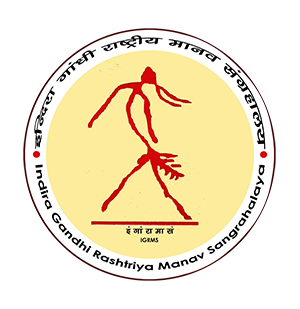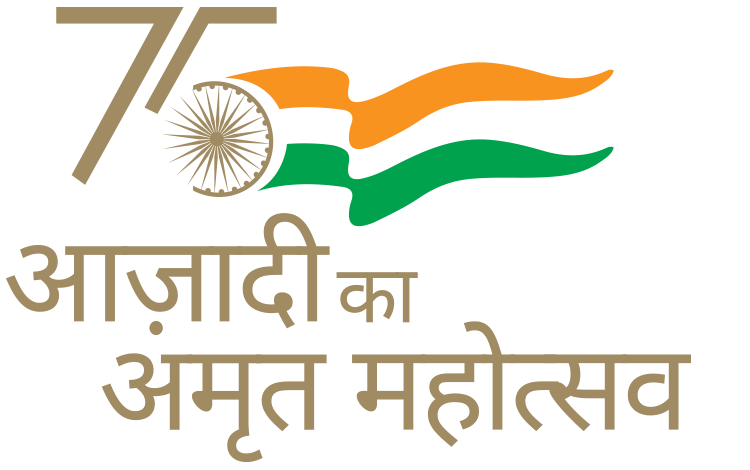सप्ताह का प्रादर्श-150
(13 से 19 अप्रैल 2023 तक)
लेलू/सारा/रादुम/राडी
पुरुषों द्वारा धारण किया जाने वाला एक हैवरसैक

महान पूर्वज अबो-तानी की वंशज अपातानी, न्यिशी, आदि, गालो और तागिन जनजातियाँ स्वयं को तानी समूह का मानती हैं। अरुणाचल प्रदेश की इन जनजातियों में ग्राम प्रधानों, पुजारियों और योद्धाओं को उनकी व्यक्तिगत सज्जा के रूप में प्रयुक्त विशिष्ट पोशाक के माध्यम से पहचाना जाता है। पीठ पर ढाल की तरह धारण किए जाने वाले इस पारंपरिक पहनावे को आदि और गालो जनजाति में लेलू, सारा, रेडम या राडी जैसे विभिन्न नामों से पुकारा जाता है। गालो जनजाति में इसे पुरुषों के लिए अत्यंत महत्वपूर्ण माना जाता है। विवाह समारोह के दौरान यह वधु के घर पर वर के कजिन माक बोलुक और करीबी रिश्तेदारों द्वारा पहना जाता है।
मुख्य रूप से बेंत से बनी यह आकर्षक कलाकृति भालू के खाल जैसी प्रतीत होने वाली जंगली घास से ढकी जाती है। प्राचीन समय में, योद्धा अपनी सामाजिक प्रस्थिति के प्रतीक स्वरूप एवं सज्जा के लिए अपनी पीठ पर भालू की खाल धारण करते थे। परंतु इस प्रादर्श में भालू के खाल के स्थान पर वैसी ही दिखने वाली जंगली घास का उपयोग किया गया है। इसके अलावा नोकते और वांचो जनजातियां भी इसका इस्तेमाल अपने पारंपरिक शिरोवस्त्र को सजाने के लिए करती हैं। प्राचीन समय में जनजातियों के आपसी झगड़ों के दौरान होने वाले संगठित युद्ध में यह योद्धाओं के लिए ढाल के रूप में काम करता था। इसके अलावा, सामान्यतः एक पुरुष कठिन चढ़ाई वाले दुर्जेय जंगलों में शिकार अभियानों और लंबी यात्राओं के दौरान पीछे से खतरनाक जानवरों के हमलों से रक्षा एवं कांटेदार वनस्पतियों से बचाव हेतु इसे धारण करता है।
आरोहण क्रमांक – 86.227
स्थानीय नाम – लेलू/सारा/रादुम/राडी
– पुरुषों द्वारा धारण किया जाने वाला एक हैवरसैक
समुदाय – अरुणाचल प्रदेश की जनजातियाँ
स्थान – अरुणाचल प्रदेश
Exhibit of the week- 150
(13th to 19th April 2023)
Lellu/ Saara/ Raadum/ Raadi
A Haversack adorned by Men
As descendants of the great ancestor Abo-tani, the Apatani, Nyishi, Adi, Galo, and Tagin tribes refer to themselves as the Tani groups. Among these tribes of Arunachal Pradesh, village chiefs, priests, and warriors are distinctly identified through some of the traditional artifacts of men’s attire used as personal adornments. This traditional back shield is known by different names such as Lellu, Saara, Radum, or Raadi by the Adi and Galo tribe. The Galos considers it a valuable adornment for their males. As a personal adornment, it is worn by close relatives and Mak Boluk, the cousins of the groom at the bride’s house during the wedding ceremony.
Despite being made primarily of cane, this fascinating artifact is covered with wild grass that resembles the fur of a bear. Historically, warriors wore bear’s skin with fur on their backs as adornments and symbols of their social status. While the present object does not utilize bear skin, it uses wild grass that gives the impression of Bear’s fur. Moreover, the Nocte and Wancho tribes also use this wild grass as a decorative feature in their traditional headgear. In the olden days during tribal feuds such an outfit served as a shield for warriors during combat. Moreover, a common male uses it during hunting expeditions and long journeys in formidable forests with difficult climbs to protect himself from attack of wild animals from behind and thorny vegetation.
Acc. No. – 86.227
Local Name – Lellu/ Saara/ Raadum/ Raadi
– A Haversack adorned by Men
Community – Tribes of Arunachal Pradesh
Locality – Arunachal Pradesh


#lellu #saara #raadum #raadi #haversack #nokte #wancho # aadi #apatani #galo #nyishi #tagin #tribesofarunachalpradesh #arunachalpradesh #cane #wildgrass #igrms #museumfromhome #objectoftheweek #ethnograhicobject #museumobject #museumofman #museumofmankind #museumofhumankind #experienceigrms #igrmsstories #staysafe



